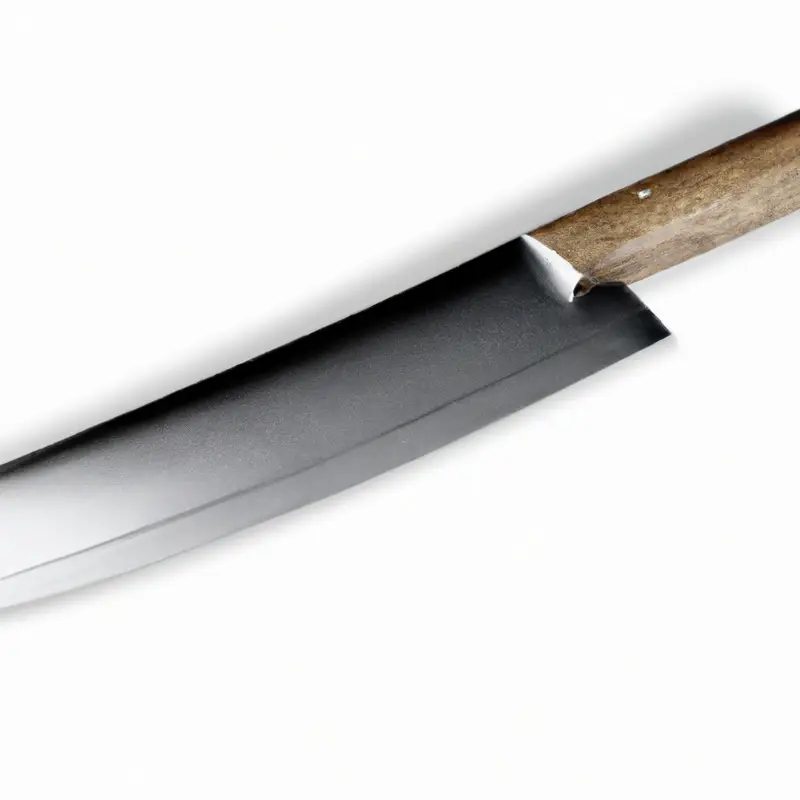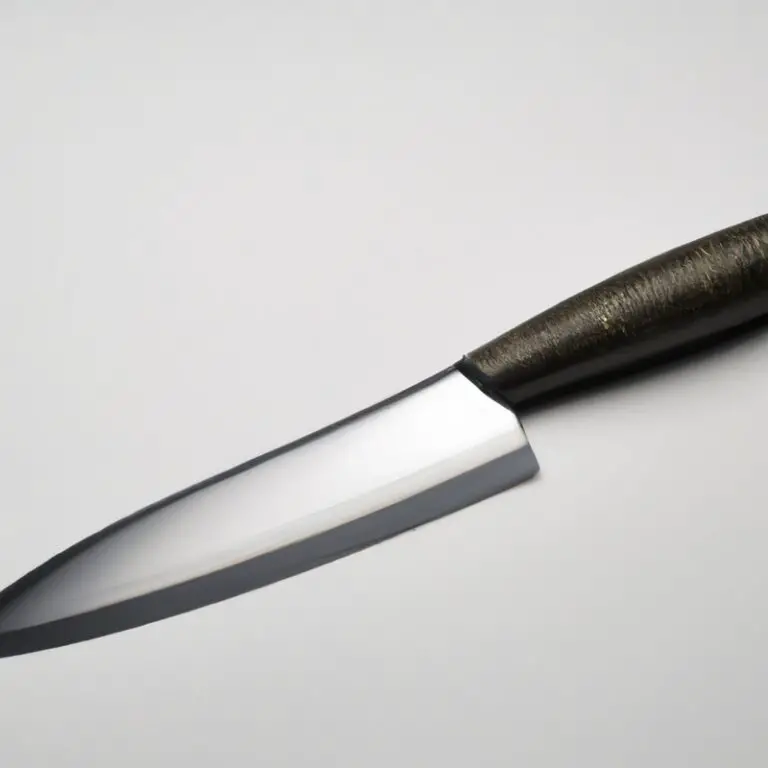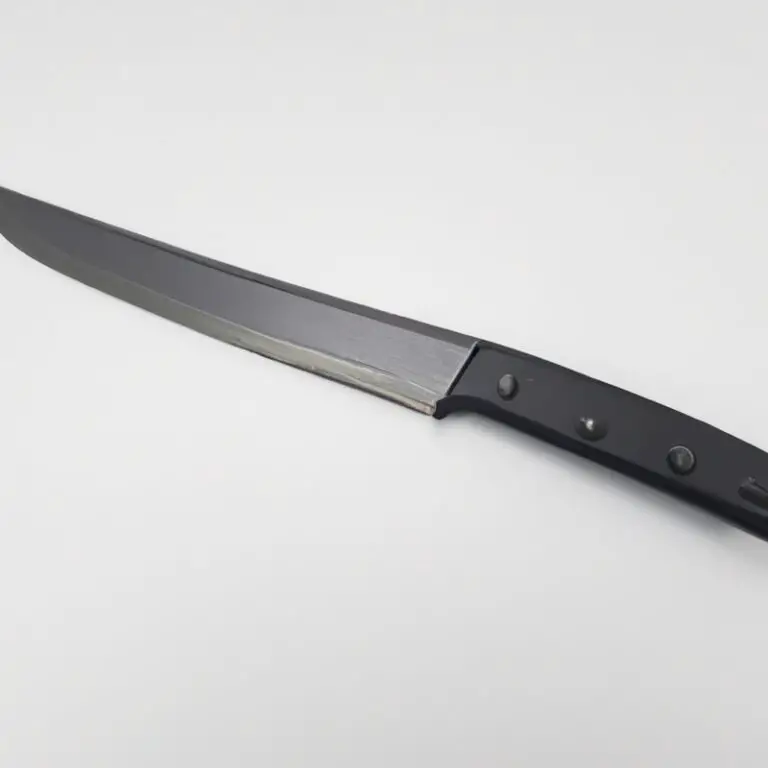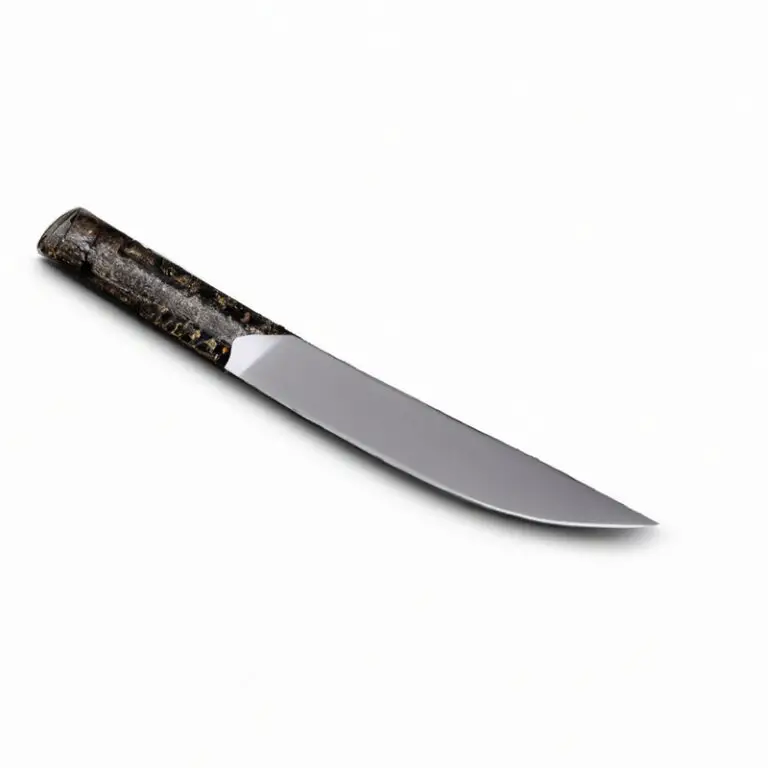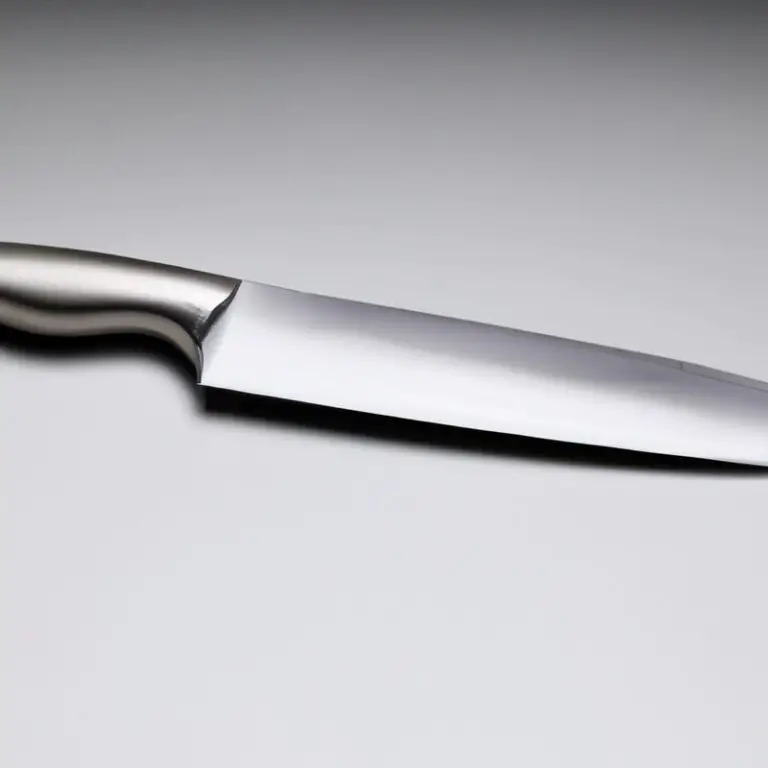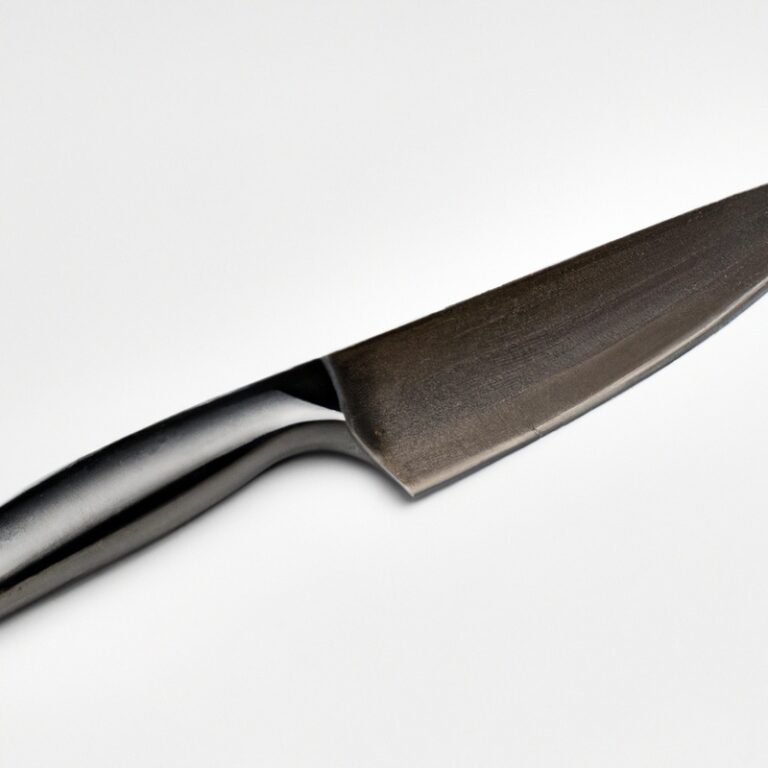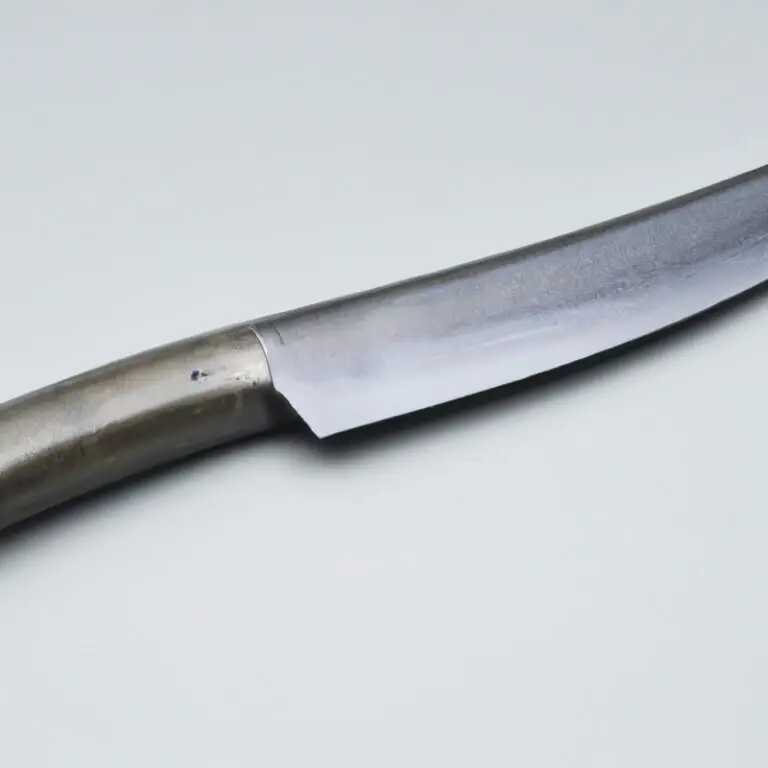What Are The Techniques To Achieve Consistent Thickness In Cuts With a Gyuto Knife? Mastering The Cut
Key Takeaways:
- Consistent thickness in cuts with a Gyuto knife is crucial for even cooking and presentation.
- Mastering proper hand positioning and angle control is essential for achieving uniform thickness.
- Maintaining a sharp blade and using the correct cutting motion can also contribute to consistent cuts.
- Regular practice and patience are necessary to develop the muscle memory and skill necessary for precision cuts.
Are you tired of uneven cuts and frustrated with your cooking precision? Look no further than the Gyuto knife.
In this guide, I will walk you through the anatomy of a Gyuto knife and the importance of selecting the right one for consistent thickness.
From mastering hand placement and blade angles to honing and sharpening techniques, achieving uniformity in your cuts is just a few steps away. We’ll also explore the influence of food texture and grain, the power of practice, and the role of cutting boards in perfecting your slicing skills.
Say goodbye to subpar cuts and hello to culinary excellence.
| Technique | Description |
|---|---|
| Blade angle | Keep the blade angle consistent throughout the cut |
| Hand placement | Maintain consistent hand placement on the knife handle |
| Rocking motion | Use a rocking motion while slicing to maintain the consistent thickness |
| Knife sharpness | Maintain the sharpness of the knife to avoid mashing or tearing of the ingredients |
Understanding the Anatomy of a Gyuto Knife: A Guide to Consistent Cuts
Understanding the Anatomy of a Gyuto Knife: A Guide to Consistent Cuts To achieve consistent thickness in cuts with a Gyuto knife, it is essential to understand the knife’s anatomy. Gyuto knives are Japanese-style knives with a straight blade that tapers to a sharp point.
Their slim blade allows for precision cuts and makes them ideal for slicing meat, fish, and vegetables.
The blade of a Gyuto knife is typically made of high-carbon steel or stainless steel. The high-carbon steel blade is harder and retains its sharpness longer than stainless steel.
On the other hand, the stainless steel blade is more corrosion-resistant, easy to maintain, and less prone to rust.
The blade’s edge is crucial for achieving consistent cuts. It should be sharpened correctly to ensure clean and even slices.
The blade’s angle plays a significant role in cut consistency, with a narrow angle ideal for precision cuts and a wider angle suitable for tougher cuts.
Proper hand placement is also critical to obtain consistent cuts with a Gyuto knife. Holding the knife correctly ensures that the user can apply consistent pressure and control the blade’s movement.
Understanding the anatomy of a Gyuto knife is the first step to achieving consistent thickness in cuts.
Knowledge of the blade’s material, edge, angle, and hand placement is crucial for precision cuts and uniformity.
The Importance of Choosing the Right Gyuto Knife for Consistent Thickness
Choosing the right Gyuto knife is a crucial factor in achieving consistent thickness while cutting. A high-quality Gyuto knife is specifically designed to slice through a variety of foods with precision and accuracy.
A sharp blade will ensure clean cuts and prevent tearing and crushing of food items.
Investing in a high-quality Gyuto knife will not only make your cutting tasks more comfortable and efficient but will also help you achieve consistent cuts every time. When selecting a Gyuto knife, consider factors such as blade material, blade length, and handle comfort to ensure that the knife fits your unique needs.
Mastering the Grip: How Proper Hand Placement Can Improve Cut Consistency with a Gyuto Knife
Proper hand placement is essential while using a Gyuto knife for consistent cuts. The grip technique must ensure that the knife provides enough support and stability, allowing the blade to slice through the food smoothly.
The index finger and thumb must rest on either side of the knife’s spine, while the remaining fingers curl around the handle.
The position of the hand should allow for full control of the blade’s motion while keeping the wrist straight. Mastering the grip takes time and practice, but it can drastically improve the consistency of cuts with a Gyuto knife.
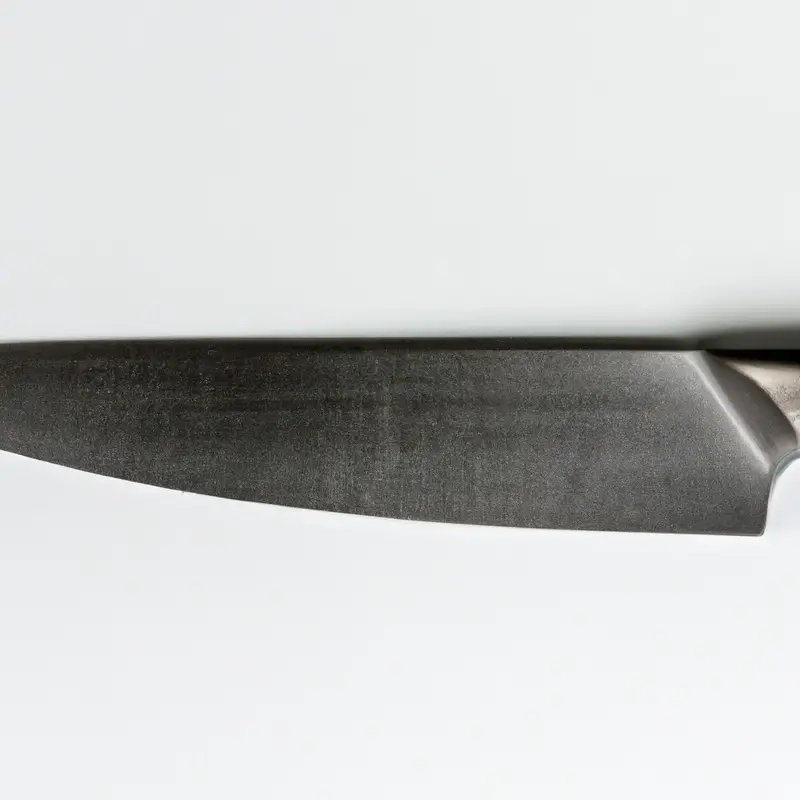
The Role of Blade Angles in Achieving Consistent Thickness with a Gyuto Knife
Blade angles play a crucial role in achieving consistent thickness with a Gyuto knife. A higher angle allows for thicker cuts, while a lower angle results in thinner cuts.
To achieve consistent thickness, it’s essential to maintain a consistent blade angle throughout the cut.
A slight deviation in the angle can cause variations in thickness. It’s also essential to ensure the angle is appropriate for the type of food being cut.
For harder foods, a higher angle is required, while a lower angle is better for softer foods.
With practice and attention to blade angles, achieving consistent thickness with a Gyuto knife can become effortless.
Honing and Sharpening Techniques for Consistent Cuts with a Gyuto Knife
Honing and sharpening are crucial to achieve consistent cuts with a Gyuto knife. Regular honing maintains the blade’s straightness, while sharpening restores the cutting-edge.
To hone a Gyuto knife, use a honing rod to run the blade’s edge at a 15-degree angle.
Run it from the heel to the tip of the blade while maintaining consistent pressure. For sharpening, use a whetstone or a sharpening steel.
Begin by holding the blade at an angle of 10 to 15 degrees, then glide it from the heel to the tip of the blade.
Repeat the process for about five to ten minutes on each side of the blade, depending on how dull it is. Remember to rinse and dry the blade after honing or sharpening.
Regular honing and sharpening of a Gyuto knife help to maintain a consistent cut.
Achieving Uniformity: Tips for Maintaining Consistent Blade Pressure with a Gyuto Knife
Achieving uniformity while cutting with a Gyuto knife requires consistent blade pressure. Here are some tips to maintain that pressure:
1. Use the correct amount of force:
Apply enough pressure to slice through the food, but not so much that it causes the knife to bounce off.
2. Maintain a steady grip:
Hold the knife in a way to ensure it maintains good contact with the food, without wobbling or slipping.
3. Keep the blade at the right angle:
Pay attention to the position of the blade, keeping it parallel to the cutting surface.
4. Use a consistent cutting motion:
Cut forward with a single, smooth motion while slightly increasing pressure as needed.
5. Keep the blade sharp:
A dull knife requires more force to make a cut, making it harder to maintain uniformity. By following these tips, you’ll be on your way to achieving consistently uniform cuts with a Gyuto knife.
Understanding Food Texture and Grain: How it Affects Consistent Cuts with a Gyuto Knife
Understanding the texture and grain of food is crucial for achieving consistent cuts with a Gyuto knife. Foods such as meat, fish, and vegetables have varying textures and grains that require different cutting techniques to achieve uniformity.
For example, meats with tough grain require a more aggressive cutting technique, while delicate foods like fish require a gentler touch.
Additionally, vegetables with a harder texture may require more pressure to cut evenly, while softer produce like tomatoes require a lighter touch. It’s important to take note of the direction of the grain when cutting meat or fish.
Cutting against the grain can result in tough and chewy cuts, while cutting with the grain can lead to soft and tender cuts.
Understanding the texture and grain of food also affects the speed and force needed when cutting. A smoother texture requires less force, while a rougher texture requires more.
By becoming aware of the texture and grain of the food being cut, you can adjust the cutting technique and pressure to achieve consistent cuts with a Gyuto knife.
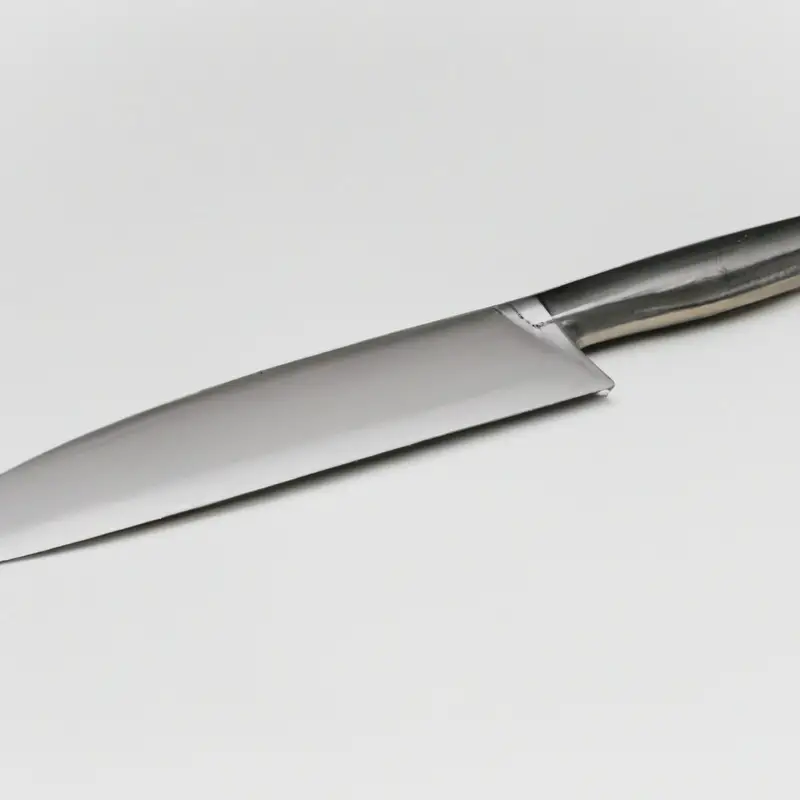
The Power of Practice: How Consistent Use of a Gyuto Knife Improves Cut Thickness and Precision
The more you use a gyuto knife, the better your cuts will become. Consistent practice is crucial in achieving the desired cut thickness and precision.
While having the right techniques and tools is essential, practice is what ultimately leads to mastery.
With each use, you become more familiar with the weight, balance, and angle of your knife, allowing you to make adjustments and refine your technique. So, keep practicing with your gyuto knife, and with time, you will undoubtedly see improvements in your cut consistency.
The Role of Cutting Boards in Achieving Consistent Thickness with a Gyuto Knife
Choosing the right cutting board can significantly improve the consistency and accuracy of cuts made with a Gyuto knife. Ideally, a cutting board should be made from a hard material such as wood or plastic, which allows the knife to maintain its edge and prevents damage to the blade.
Furthermore, a cutting board with a non-slip surface will help keep the ingredients in place, minimizing the risk of slips and uneven cuts.
It’s also crucial to keep the cutting board flat and stable to provide a solid base for slicing. Avoid using cutting boards made from materials such as glass and stone, as they are harder and can dull the blade quickly.
Regularly maintaining and replacing the cutting board when necessary will also ensure that it remains effective in achieving consistent cuts with your Gyuto knife.
Avoiding Common Mistakes: Tips for Achieving Perfectly Even Cuts with a Gyuto Knife
To achieve consistent thickness in cuts with a Gyuto knife, avoiding common mistakes is crucial. Here are some tips to achieve perfectly even cuts:
- Use the right technique: Position the blade at an angle, and slice with a smooth and steady motion. Avoid pressing down too hard or sawing back and forth.
- Keep the blade sharp: A dull blade can cause uneven cuts. Use a sharpening stone or honing rod to keep the blade sharp.
- Maintain consistent pressure: Apply consistent pressure on the blade while slicing. Avoid pressing down too much or too little.
- Pay attention to food texture: Different types of food have varying textures. Understanding the texture of the food can help achieve uniform cuts.
- Choose the right cutting board: Use a sturdy and stable cutting board to prevent slips and uneven cuts.
By keeping these tips in mind and practicing consistently, you can achieve perfectly even cuts with a Gyuto knife.
Final Verdict
Achieving consistent thickness in cuts with a Gyuto knife requires a combination of technical knowledge and practice. It involves understanding the anatomy of the knife, hand placement, blade angles, honing and sharpening techniques, maintaining blade pressure, and comprehending food texture and grain.
With discipline and commitment, anyone can master the art of consistent cuts and produce professional-grade results.
Remember, the key to success is to practice regularly and be patient with yourself. By using the right cutting board and avoiding common mistakes, you can achieve the perfect cut every time.
With this guide, you can confidently wield your Gyuto knife and impress your guests with precision in every slice.
Follow these techniques, and you’ll soon become a master of consistent cuts with your Gyuto knife.

